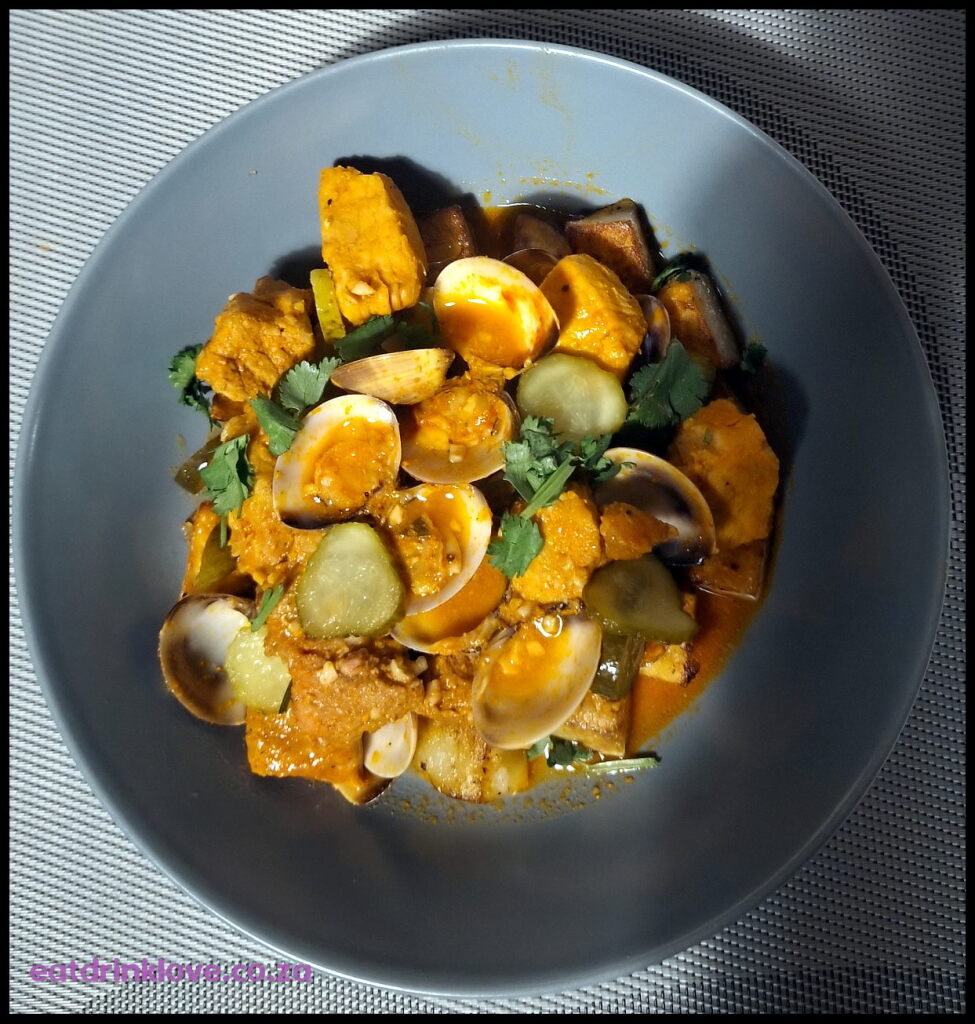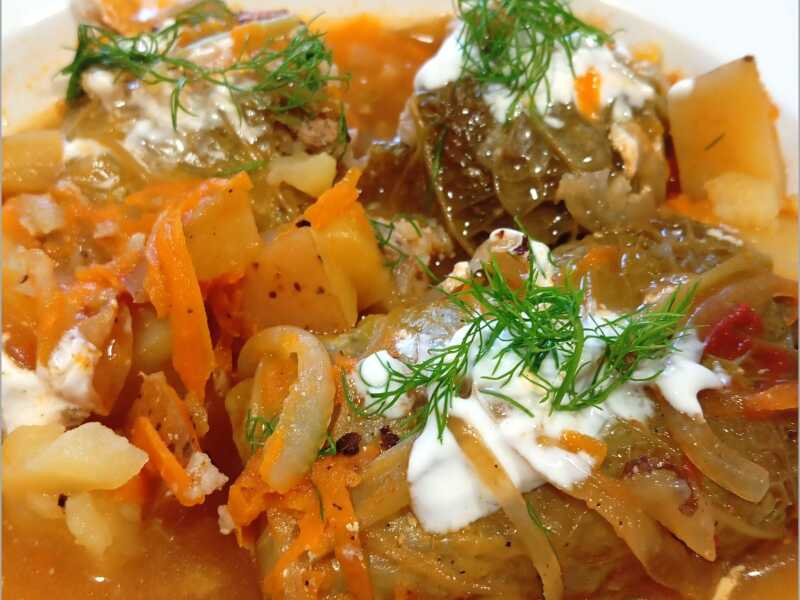Originating from the Alentejo region of Portugal, Carne de Porco à Alentejana is a beloved dish that combines tender pork, succulent clams, and crispy potatoes in a flavourful medley. This traditional recipe captures the essence of Portuguese cuisine, blending aromatic spices, fresh seafood, and hearty ingredients.
Serving Size: 4
Ingredients
- 700g pork loin, cubed into 1½cm pieces
- 700g fresh clams, thoroughly rinsed and soaked overnight
- 6 cloves of garlic, thinly sliced
- 1 tablespoon paprika
- 2 tablespoons pepper paste
- 3 bay leaves
- 2 teaspoons black pepper
- 1 teaspoon salt
- 250ml white wine
- 700g potatoes, peeled and cubed into 1½cm pieces
- 4 tablespoons lard
- 100g pickles, thinly sliced for garnish
- A handful of chopped coriander for garnish
- Olive oil
Method
Marinate the meat: In a medium bowl, combine the garlic, paprika, pepper paste, salt, bay leaves, and white wine. Add the pork cubes and mix well. Marinate overnight in the refrigerator.

Fry the meat: Drain the marinated pork, reserving the marinade. In a large frying pan over medium heat, add a dash of olive oil and 2 tablespoons of lard. Add the pork cubes and fry until evenly browned.
Add the clams: Drain the soaked clams and add them to the pan with the pork. Pour in the reserved marinade and stir well. Cover and cook until the clams are done, seasoning with salt and pepper to taste. Turn off the heat.
Prepare the potatoes: In another frying pan, heat a dash of olive oil and 2 tablespoons of lard over medium heat. Add the cubed potatoes and fry until crispy. Drain any excess oil from the potatoes.
Serve: Arrange the fried potatoes on a serving platter, then spoon the pork and clam mixture over the potatoes. Garnish with sliced pickles and chopped coriander before serving.

History
Carne de Porco à Alentejana holds a significant place in Portuguese culinary heritage, with roots tracing back to the Alentejo region, renowned for its rich gastronomic traditions. The dish is a delightful marriage of land and sea, showcasing the diverse culinary influences that have shaped Portuguese cuisine over the centuries.
Historically, pork has been a staple protein in Portuguese cooking, owing to the country’s abundant pig farming and husbandry practices. The Alentejo region, with its vast plains and agricultural abundance, has long been associated with pork production, making it a natural choice for local dishes.
The addition of clams to Carne de Porco à Alentejana reflects Portugal’s extensive coastline and deep-rooted maritime culture. Seafood has been a vital part of Portuguese cuisine since ancient times, with coastal communities relying on the bounty of the sea for sustenance.
The origins of Carne de Porco à Alentejana are steeped in tradition, with recipes passed down through generations of Portuguese families. It is believed that the dish was born out of a desire to create a hearty and satisfying meal using readily available ingredients, combining the earthy flavors of pork with the briny freshness of clams.
Today, Carne de Porco à Alentejana remains a beloved dish cherished by both locals and visitors alike. Its enduring popularity is a testament to the time-honored culinary traditions of Portugal and the enduring appeal of dishes that celebrate the country’s rich cultural heritage.



